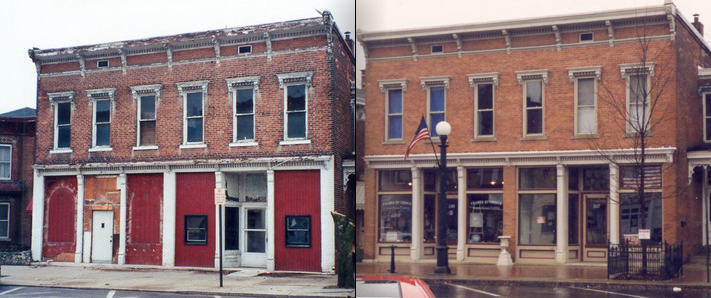
Examining Historic Tax Credits
An old shoe factory in St. Paul is transformed into an LEED-certified affordable housing structure. Across the river in Minneapolis a disused library building becomes a neighborhood career and technology center. These are just two of the projects benefiting from the Minnesota Historic Structure Rehabilitation State Tax Credit.
Historic tax credits (HTCs) provide a strong incentive for developers to preserve and renovate historic buildings instead of demolishing and building anew. The federal government currently provides a 20% tax credit towards qualifying rehabilitation expenses. The building must be certified as an historic structure by the National Park Service and the rehabilitated property must be used for income-producing purposes.
The C2ER State Business Incentives Database is an invaluable tool for identifying available incentives and evaluating their eligibility requirements. The Database allows users to easily search incentives by a variety of criteria, including keyword, funding source, and geographic focus.
By comparing programs in the C2ER State Business Incentives Database it is evident that state historic tax credits typically mirror the federal incentive. Minnesota and Oklahoma provide a 20% tax credit for programs which meet the eligibility requirements of the federal credit. Ohio, Georgia, and Kansas provide a 25% tax credit while Delaware provides up to a 100% tax credit for eligible projects.
Budget shortfalls pose a particularly strong threat to HTCs. The Rhode Island legislature voted to defund its HTC program for next year. Wisconsin, fearing that the unexpected success of its HTC would eat into state tax revenues, suspended the program in late June. It has since been partially restored.
The National Trust for Historic Preservation recently published a study analyzing the economic effects of the federal HTC. According to the Trust, $1 of historic trust tax credit will generate at least $4 of private sector investment. The report further states that for “every $1 million in historic property investment, 16 jobs are created and $2.1 million in economic activity is catalyzed.”
Using the C2ER State Business Incentives Database and the NTHP study it is possible to determine how significant HTCs are to state economic development. Per the C2ER Database, Minnesota predicts it will expend $17,100,000 in 2014 on the Historic Structure Rehabilitation State Tax Credit. Using the 1-4 ratio indicated by the NTHP study, we can conclude that the Minnesota credit will generate an additional $68,400,000 investment from private sources.
Historic buildings have become housing units, neighborhood career and technology centers, offices, restaurants, and public event spaces. Encouraging developers to renovate existing structures allows a community to grow economically while retaining its cultural, aesthetic, and historical identity. The C2ER State Business Incentives Database can help communities and developers find a myriad of credits, grants, loans, and tax exemptions to aid their projects.
